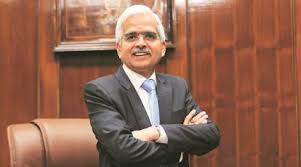21 March 2025 Indian Express Editorial
What to Read in Indian Express Editorial( Topic and Syllabus wise)
Editorial 1 : US Fed’s delicate dance, RBI’s task ahead
Introduction
The US Federal Reserve has decided to keep interest rates unchanged, citing growing economic uncertainty. The target range for the federal funds rate remains at 4.25% to 4.5%. While the Fed has indicated the possibility of two rate cuts later this year, Chairman Jerome Powell emphasized a cautious approach, stating that the central bank is in no rush to alter its policy stance. The decision reflects concerns over slowing economic growth, rising inflation, and increasing unemployment, highlighting the complex economic landscape.
Key Economic Indicators and Concerns
- Revised Economic Projections
- GDP growth for 2025 has been downgraded from 2.1% to 1.7%.
- Inflation expectations have risen to 2.7%, up from 2.5%.
- The unemployment rate is projected to increase slightly from 4.3% to 4.4%.
- Policy and Market Uncertainty
- Powell acknowledged the unpredictability of the economic outlook, emphasizing the need for greater clarity before making rate adjustments.
- The uncertainty index of the St. Louis Fed has been rising, signaling heightened economic concerns.
- The Conference Board’s consumer confidence index fell to 98.3 in February, reflecting weaker sentiment among households and businesses.
- Impact of Tariffs and Policy Decisions
- The upcoming reciprocal tariffs set to take effect from April 2 have added to economic uncertainty.
- Concerns persist over the broader impact of US government policies on trade deficits, tariffs, and immigration.
- The Atlanta Fed’s GDPNow model projects a contraction of -1.8% in US GDP for the first quarter of 2025, suggesting a potential economic slowdown.
Conclusion
The Federal Reserve’s decision to maintain interest rates underscores the delicate balance it must strike between managing inflation and supporting economic growth. With key indicators pointing to a slowdown and global uncertainties compounding the challenge, the Fed is adopting a wait-and-watch approach. As policymakers assess economic trends in the coming months, their response will be crucial in shaping financial markets and broader economic stability.
Editorial 2 : A lasting ceasefire remains distant in West Asia – peace even more so
Introduction
The fragile ceasefire agreement between Israel and Hamas, initiated on January 19, has collapsed, reigniting conflict in the war-torn Gaza Strip. Despite hopes for a phased approach to peace, negotiations for the second phase—focused on Israel’s withdrawal and hostage releases—never materialized. Instead, tensions escalated, culminating in Israeli airstrikes on March 18 that killed over 400 people, followed by a renewed ground offensive. With war resuming and US backing expected for Israel, the region faces deepening instability.
Breakdown of the Ceasefire and Renewed Conflict
- Failure of the Three-Phase Deal
- The ceasefire’s first phase ended on March 1, but talks for the second phase stalled.
- Israel intensified pressure on Hamas by cutting off aid and electricity to Gaza.
- Hamas, still holding 59 hostages, refused to release them without assurances of Israeli withdrawal.
- Israel’s Military Response
- On March 18, Israel broke the ceasefire with airstrikes, causing mass casualties and injuries.
- A subsequent ground offensive advanced to the Netzarim Corridor, effectively splitting Gaza in two.
- The resumption of violence has worsened humanitarian conditions for Palestinians.
- Hostage Crisis and Political Fallout
- Hamas continues to use hostages as bargaining chips, complicating negotiations.
- Families of hostages have criticized Israeli Prime Minister Benjamin Netanyahu, accusing him of abandoning their loved ones.
- The war’s continuation diminishes prospects for a diplomatic resolution.
Conclusion
The collapse of the ceasefire has thrown West Asia into deeper turmoil, with civilians bearing the brunt of the renewed conflict. The absence of meaningful negotiations and the escalation of military actions on both sides prolong the suffering and reduce the likelihood of a lasting peace. As geopolitical dynamics play out, the region remains on the brink of further devastation.
Editorial 3 : The Third Edit: In the odyssey of Sunita Williams and Butch Wilmore, a reminder to focus on the big picture
Introduction
Space exploration has always been fraught with risks, yet it remains one of humanity’s most ambitious pursuits. For astronauts Sunita Williams and Barry ‘Butch’ Wilmore, their Boeing Starliner test flight, which began in June last year, turned into an unplanned endurance test. What was meant to be an eight-day mission stretched to 286 days due to propulsion system failures. Their eventual return not only marked a milestone in resilience but also underscored the unpredictable nature of space travel.
Key Highlights of the Mission
- Unexpected Extension and Challenges
- Originally planned for eight days, the mission lasted nearly ten months due to spacecraft malfunctions.
- Despite setbacks, Williams and Wilmore adapted to the prolonged mission, showcasing human resilience in extreme conditions.
- Record-Breaking Achievements
- The astronauts orbited Earth 45,676 times, covering 195 million kilometers before their splashdown off the Florida Panhandle.
- Sunita Williams set a new record for the most time spent spacewalking by a woman, logging 62 hours and six minutes, surpassing NASA’s Peggy Whitson.
- Context in Spaceflight History
- While their mission was not the longest in history—Russian cosmonauts Valeri Polyakov (437 days) and Sergei Avdeyev (379 days) hold that distinction—it was a testament to human adaptability in space.
- Their extended stay contributed valuable data on long-duration spaceflight, crucial for future deep-space missions.
Conclusion
The mission of Williams and Wilmore exemplifies the triumphs and trials of space exploration. It reinforces the idea that with perseverance, scientific curiosity, and a touch of luck, humans can push boundaries and deepen their understanding of the universe. Their journey stands as a testament to the resilience required for future interplanetary endeavors, proving that even when faced with the unknown, the spirit of exploration prevails.


